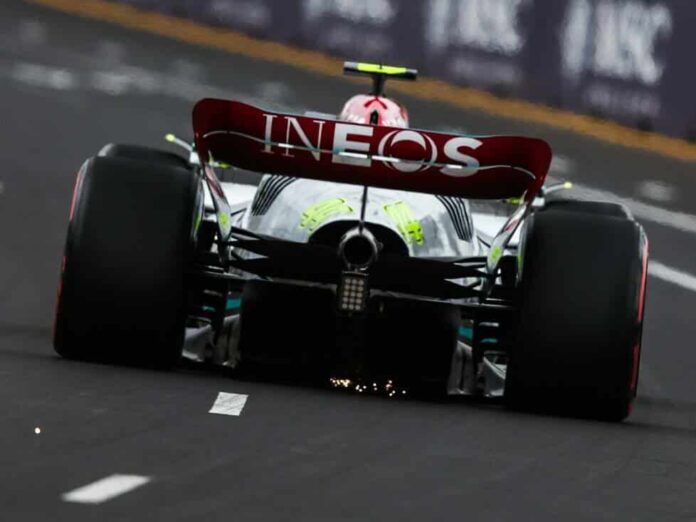Lewis Hamilton’s Mercedes was fitted with extra parts in Australia, making his car heavier than that of team-mate George Russell
It is by no means unusual for Formula One teams to fit extra sensors to their cars at race weekends to gather data for further development. However, the fact that such sensors, which are not necessary for the use of the car, are not removed even during qualifying and the race, is something that happens rather rarely.
This is what happened at the Australian Grand Prix, on Lewis Hamilton’s Mercedes F1 W13 E Performance. Sensors were visible both on the side flanks of his underbody and underneath the car, which George Russell did not have fitted. And that meant some extra weight for Hamilton’s car.
A particularly noticeable feature was a glowing sensor on the underbody of Hamilton’s W13, which was supposed to measure ground clearance. Apparently Mercedes hoped this would provide meaningful data on the behaviour of the “porpoising”, which continues to be regarded as the biggest single problem with the “Silver Arrow”.
“In a normal year we wouldn’t even consider leaving sensors like this on the car,” admits chief strategist James Vowles in the Mercedes team’s latest strategy video for the Melbourne race weekend.
“Normally you would put the sensors on that you absolutely need to understand what’s going on. But clearly this year is not a normal year for us and the car is overweight as it is.”
Hamilton finished fourth behind Russell at Albert Park as he fell behind his teammate during pit stops, who was able to complete his tyre change under safety car conditions.
Although Hamilton was able to catch up with Russell towards the end of the race, problems with increased temperature prevented the seven-time world champion from attacking. According to Vowles, it is not unusual for the weight of the two cars to differ marginally, simply because of the sheer volume of different parts, which can never be exactly the same weight.
Scarcely any additional weight due to sensors
However, the extra sensors on Hamilton’s car hardly added any weight. “There are thousands of components that make up the race cars for George and Lewis, and those components can’t all be exactly the same weight,” Vowles explained.
“It’s a few grams here and a few grams there, but when our cars were weighed on the FIA scales it showed that the difference was really only a few grams. So the time loss that Lewis had from the sensors was very minor. And that’s exactly how we thought it would be.”
Vowles stresses that the data collected by the sensors is helpful, but: “It’s not like we’re going to turn everything upside down now and have the solution ready in one race. But at least we’ve found clues and an understanding of what to do to move forward.”
Incidentally, obesity is an issue that has been preoccupying more than just Mercedes in Formula 1 2022 since the new rules were introduced. A recent video explaining why the cars have become so much heavier is now available on the YouTube channel of Formel1.de. Subscribe to the channel, activate the bell and never miss a new Formula 1 video again!





